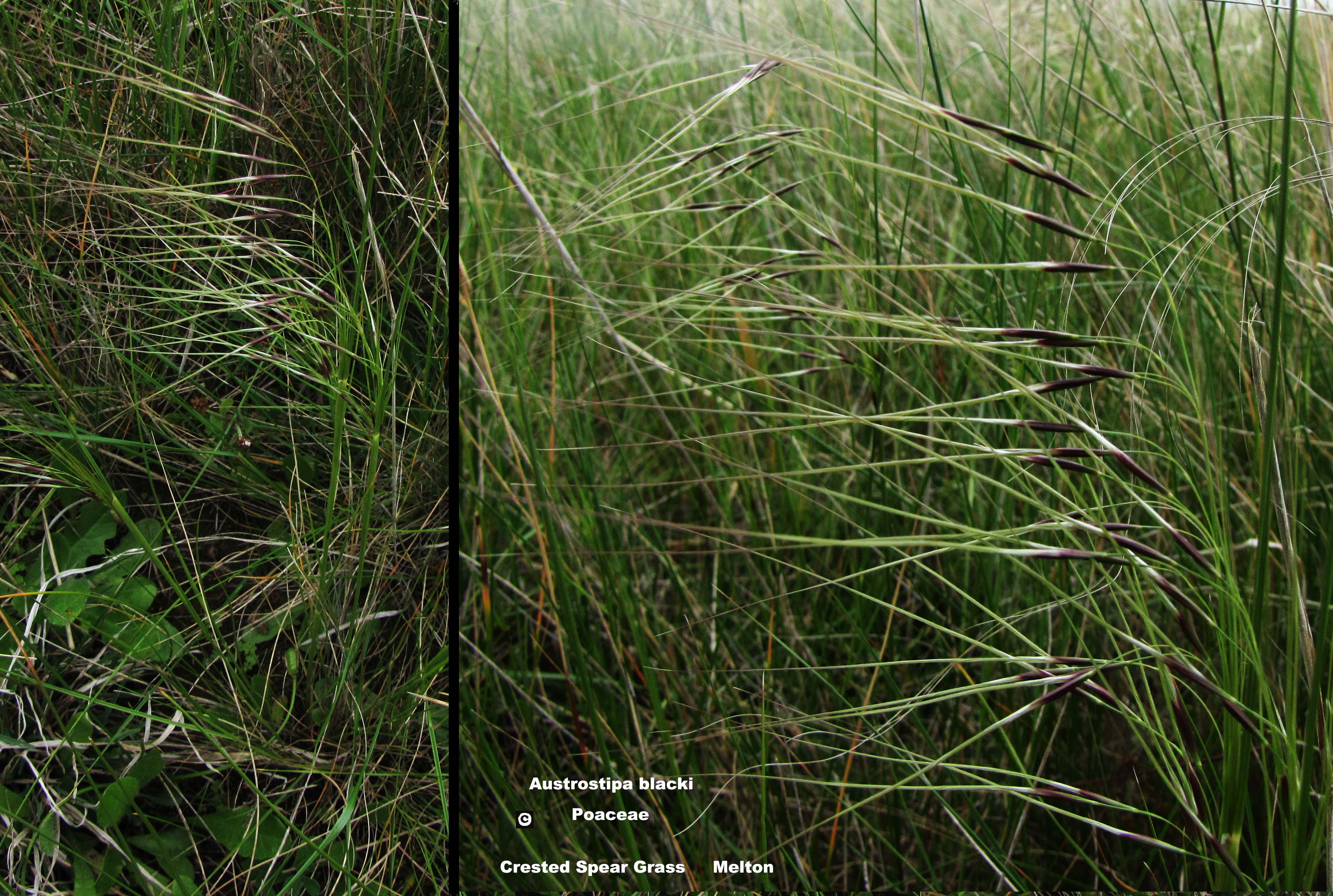
Crested Spear-grass
Austrostipa blackii
Tufted erect perennial grass with flowering stems to 1.2 m. Stem joints (nodes) have dense silky straight hairs. Leaves to 30 cm long and with stiff downy hairs. Leaf- sheath has ear-shaped lobe (auricle) with a tuft of longer hairs at each side where it joins the stem. Seedhead is a slender contracted cluster to 30 cm long with few branches. Seeds deep brown and covered in white or golden hairs with long awn or bristle to 40 mm, twice bent. Using a hand lens the short leaf collar (ligule) is <1.5 mm tall and is covered in tiny hairs with tufts of hairs at its side.
| Details | |
|---|---|
| Flora Type | Grasses |
| Former Scientific Name | Stipa blackii |
| Distinctive Features | Tall hairy grass in many of its parts, including the nodes with dense silky hairs. Lower leaves in particular are covered with dense downy hairs. |
| Biology | Perennial. Deep sands and rocky sites. Preferential grazing of other grasses can lead to flowering and seeding of Spear-grass and their long awns (bristles) can work their way into the skin, mouths and eyes of stock, and contaminate wool. |
| Native Status | Native |
| Flowering Time | Nov-Jan |